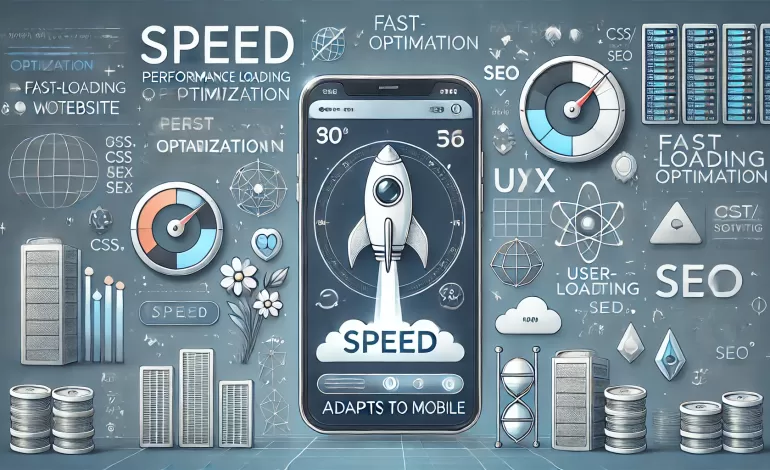Imagine walking into a store and waiting 10 seconds for the automatic doors to open. Awkward, right? That’s exactly how users feel when your mobile site crawls at a snail’s pace. If your site takes longer to load than it does to microwave popcorn, it’s time for a speed boost.
Let’s dive into the fun world of page speed – yes, fun – and learn how to make your site fast enough to keep visitors (and Google) happy.

Why Page Speed is the VIP of Mobile SEO
Google loves speed. In fact, if your site isn’t fast, Google might quietly move you down the search results – no breakup text, no goodbye wave. Slow sites lead to high bounce rates, and users are quick to leave (probably faster than your site can load).
Pro Tip: Think of your mobile site like a pizza delivery – if it’s not fast and hot, people won’t stick around.
Test Your Speed – Is Your Site in the Fast Lane or Stuck in Traffic?
Before you fix anything, you need to know where you stand. Use Google PageSpeed Insights to test your site. It’s like a report card, but for websites.
- 90-100: Your site is in race car mode – congrats!
- 50-89: Not bad, but there’s room for improvement.
- 0-49: Your site needs help… like, now.
Pro Tip: Aim for at least 90. Anything below and users might start twiddling their thumbs.
Compress Those Images (No One Needs a 5MB Cat Photo)
We get it, high-resolution images look great. But do you really need that ultra-HD photo of a coffee cup taking up half your homepage? Probably not.
Fix It:
- Use tools like TinyPNG or ImageOptim to shrink images without losing quality.
- Stick to WebP format – it’s like JPEG but faster.
Pro Tip: Your images should be light but still sharp – think of it as dieting for your website.
Lazy Load Like a Pro
Lazy loading means your site loads only what’s needed, when it’s needed. Why make users wait for content they haven’t even scrolled to yet?
How to Do It:
- Implement lazy loading for images and videos.
- Use “loading=lazy” in your HTML.
Pro Tip: Lazy loading makes your site feel faster – and users love that.
Minimize CSS, JavaScript, and HTML (No One Likes Clutter)
Excess code slows down your site. Think of it like carrying around a backpack full of bricks – unnecessary and exhausting.
What to Do:
- Minify your CSS, JavaScript, and HTML with tools like Minify Code or UglifyJS.
- Remove unused code.
Pro Tip: Clean code = faster site. Plus, Google gives you extra points.
Fast Hosting is Key (Cheap Hosting = Slow Site)
Your hosting provider plays a HUGE role in your site’s speed. Cheap, shared hosting often leads to slower load times, especially during high traffic.
What to Look For:
- Invest in premium hosting or CDN services.
- Use providers like SiteGround, WP Engine, or Kinsta.
Pro Tip: Good hosting is like a great espresso – fast, reliable, and wakes everything up.
Reduce Redirects (One Way, No Detours)
Every time your site redirects, users wait longer. More redirects = slower speeds.
Fix It:
- Eliminate unnecessary redirects.
- Keep only essential ones.
Pro Tip: Direct routes are always faster – same goes for websites.
Enable Browser Caching (Let’s Save Some Time)
Caching stores data, so users don’t have to reload everything every time they visit your site.
How to Enable It:
- Use plugins like WP Super Cache (if on WordPress).
- Update your .htaccess file to set caching rules.
Pro Tip: Think of caching as giving your site a memory – it remembers visitors and loads faster next time.
Test Again and Celebrate
Once you’ve made these changes, retest your site with Google PageSpeed Insights. Celebrate every point increase – small wins matter!
Pro Tip: Regular testing keeps you ahead of the game. Mobile speed isn’t a one-time fix, it’s an ongoing journey.
A faster mobile site means happier visitors, better SEO, and higher conversions. It’s a win-win-win. So, stop losing visitors to slow load times – supercharge your site today.
👉 Need a speed boost? SEOCTRL's On-Site SEO Services can turbocharge your site’s performance! 🚀 Let’s turn your site into a speed demon—contact us today!